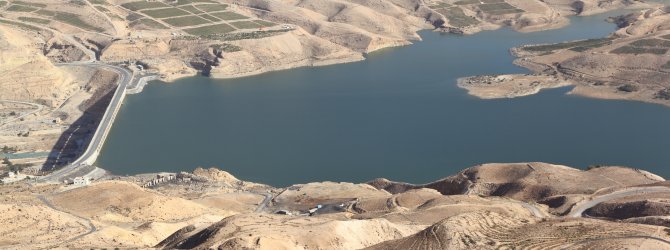-
What's Inspiring WANA - A Lesson From Singapore
What's Inspiring WANA - A Lesson From Singapore

In September 2014 I had the privilege to participate in a unique and enriching experience: the Singapore International Water Week (SIWW). The event is a platform for discussion, debate and the exchange of ideas between both senior water practitioners and youth from all over the world who are eager to engage with water challenges in their own countries.
Singapore is a modern city-state and island country located in the heart of Southeast Asia. It has a population of around 5.5 million that is distributed over a mere 275.8 square miles, which is the 3rd highest population density in the world. This diamond shaped state has faced a lot of challenges since gaining its independence from Malaysia in 1965, but impressively it has taken just a little time for it to shine.
The story of this small island is truly miraculous. Only half a century ago, Singapore’s opportunities for water collection seemed to be gloomy and hopeless. This was due to its limited land available to collect and store rainwater, as well as its increasing levels of draught, floodings and water pollution. These environmental issues were made even more challenging by the country’s rapid urbanisation process and scarce natural resources.
Today, Singapore has made a ‘massive step’ toward ensuring sustainable development. This has been achieved through a establishing a proper management of water resources by strategic planning and investment in research and technology. PUB, Singapore’s National Water Agency has built a robust and diversified supply of water known as the ‘Four National Taps’. The water supply comprises (1) local catchment water, (2) imported water, (3) highly-purified reclaimed water known as NEWater, and (4) desalinated water. Singapore is one of the few countries in the world to harvest urban storm-water on large scale to contribute to its for its water supply. Rainwater is collected through a comprehensive network of drains, canals, rivers, storm- water collection ponds and reservoirs before it is treated to be suitable for public drinking water supply. To support this, today two thirds of Singapore’s land surface is considered as water catchment areas, PUB is aiming to increase the catchment area to 90% in the future.
One of the events I attended during the International Water Week was the Young Water Leaders Summit (YWLS), which was held at the ‘Marina Barrage’ a fascinating structure, as well as Singapore’s fifteenth reservoir. The Barrage serves three purposes: it provides water storage, flood Control and recreation offering a venue for water-based activities in the heart of the city. At this summit I had the opportunity to drink Singapore’s NEWater (the third national tap). NEWater is high-grade reclaimed water, produced from treated used water that is further purified using advanced membrane technologies and ultra-violet disinfection, making it ultra-clean and safe to drink. NEWater plants can meet up to 30% of the nation’s current water needs and is considered the pillar of water sustainability.
The progress and achievements reached by this small island are striking and represent a strong motivation for other countries facing similar challenges. Water related issues vary in different parts of the world and each one of them should be dealt with in the most suitable approach.
During the Young Water Leaders Summit at SIWW, Mr Chew Men Leong, the Chief Executive Officer of the Public Utilities Board (PUB), Singapore's national water agency mentioned that, when it comes to water, the best investment is in the people. I strongly agree with this view. It is people who are the agents of change, and in order to address and resolve water and environmental challenges effectively, we need to invest in knowledgeable, aware and motivated future leaders. Challenges can be tackled and reduced, solutions can be found and it is our duty to find them.
I believe that Singapore’s water experience is a great example of turning vulnerability into strength, It shows that nothing is impossible, if approached in the right way. It is stories like this that we should turn to, when the future of water does not seem so bright. It is stories like this that motivate us, the agents of change, to actually stand up and make the change happen.

